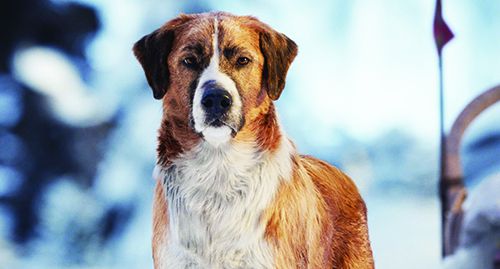
There’s nothing modern about human beings anthropomorphising animals in stories; some of our earliest spiritual practice is called “animism,” and it’s common for traditional cultures to assume full agency for plants, stones, and rivers as well as the animals who share their worlds.
Coyote, Anansi, Anubis, kitsune – countless personified beings in ancient narratives and depictions – invert, transgress, and transcend lines between human and animal. Both art and story frequently move between depicting such beings as animals with plausible animal motives and as animal-influenced anthropomorphic figures. Sometimes Coyote appears to be a wild canid on the hunt, sometimes a god, sometimes a bipedal trickster with a bushy tail and a penchant for scatological jokes.
Classical fables attributed to Aesop featured animals conversing across species, displaying both individual character traits and stereotypes of virtue and weakness personified in a species – crafty foxes, greedy monkeys, foolish asses. These morality tales with animal and “animal” characters persisted from antiquity to the modern age.
All these entities coexist comfortably with real animals in the minds of humans who are intimately familiar with the natures of the animals with whom they interact daily and depend upon for life and livelihood. No hunter-gatherer can countenance a big-eyed quadrupedal spotted human toddler called Bambi. A horse-crazy girl can become an equestrian and read Black Beauty without once believing that Ginger and Beauty are actually discussing the bearing rein out in the paddock.

He had a way of taking Buck’s head roughly between his hands, and resting his own head upon Buck’s, of shaking him back and forth, the while calling him ill names that to Buck were love names. Buck knew no greater joy than that rough embrace and the sound of murmured oaths, and at each jerk back and forth it seemed that his heart would be shaken out of his body so great was its ecstasy. And when, released, he sprang to his feet, his mouth laughing, his eyes eloquent, his throat vibrant with unuttered sound, and in that fashion remained without movement, John Thornton would reverently exclaim, “God! You can all but speak!”
HOW COMPUTER-GENERATED IMAGERY GOES WRONG
But what happens when human beings become increasingly alienated from the natural world and the animals who share it with us, while passively absorbing imagery about them that is a lie?
How likely are we technologically tethered humans to absorb and integrate false information about animal consciousness, lives, emotions, and behavior? False information can prevent us from understanding the ways that nonhuman animals differ from us, and even the genuine (rather than idealized or projected) ways that we are alike. False information also can congeal into unexamined bedrock beliefs that resist science, common sense, and even the testimony of our own eyes – and it’s all the more powerful because it was absorbed unconsciously in the course of being entertained by a visually robust and sentimental story.
Given the great imbalance between the time and attention that most of us devote to the natural world around us and what is usurped by screens, it seems reasonable to be concerned about screen visuals interfering with our integration of animal reality. In concrete terms, the fear is that the screen dogs prevent us from understanding and having reasonable expectations of real dogs.
SETTING EXPECTATIONS

Every trainer carps about Lassie expectations and Marley ownership. We roll our eyes at middle-aged people who fear Rottweilers because they first saw them as devil-dogs in The Omen. Breed stewards howl when the trailer for some blockbuster reveals one of theirs in a fantasy-scripted role – anticipating a run on Dalmatians or Huskies or Malinois purchased and discarded by fatuous fantasists. What is new is the apparent realism that is more visually powerful, and potentially makes a stronger and more persistent unconscious impression, than what the chronic viewer experiences through interactions with flesh-and-blood dogs.
Straightforward fantasy that crosses a clear threshold doesn’t seem to be a large problem, for the very reason that Aesop has not been. Relatively few people beyond the age of reason think that pigs and sheepdogs and ducks chat in English via CGI-rendered mouth movement.
Humans respond poorly to inanimate things that pretend to be human and almost-but-don’t-quite succeed.
If a robot or CGI-rendered character is only vaguely human-contoured, that’s generally okay. C3PO and Shrek do not startle and distress us; “RealDolls” and Princess Fiona do, and “The Conducter” in The Polar Express definitely does. Motion-capture of actor Andy Serkis to bring life to the degraded creature Gollum, with his spindly limbs and hypertrophied eyes, works in a fantasy context. A Tom Hanks-shaped computer Tom Hanks, not so much.
The space in which a fake human is both too human and not human enough has been named “the uncanny valley.” 1 Its contours vary somewhat between individuals, and possibly between cultures and generations, but every person seems to have a set point where we respond, “Oh, h*** no!”
Humans have good emotional detectors for things we perceive as willful imposters, and our instinct is to reject them as up to no good. The perfectly proportioned android or image may be given away by slightly incorrect movements, or textures, or in the final case, the eyes. It’s hard to get the windows of the soul right when there’s definitely no soul there.
At least one scientific study found that we also reject imposter animals of familiar species.2
Which is why my guarded excitement at hearing that the actor who is my sexual orientation would be starring in a big-budget movie adaptation of a classic canine-centric adventure novel flipped to a visceral, “Aaaaagh! Harrison Ford, how could you?!” the moment I viewed The Call of the Wild movie trailer.
How do the moviemakers not see how wrong the CGI-altered Buck is?
20th Century Studios issued an official synopsis, including this astounding claim:
“As a live-action/animation hybrid, The Call of the Wild employs cutting-edge visual effects and animation technology in order to render the animals in the film as fully photorealistic and emotionally authentic characters” [emphasis ours].
Some of the wrongness that dog-savvy individuals can articulate about the fake, imposter Buck and the other very wrong CGI animals has to do with what we can see about movement – the gait that flows and slinks in a way that no quadruped does, and the over-long, apparently telescoping neck. The fur is CGI fur, painstakingly rendered, precisely incorrect. However, a casual sampling of acquaintances suggests that people who do not live highly animal-centric lives do not perceive these deficiencies.
But mostly, it is pretender-Buck’s eyes.
They are not the eyes of a dog who can almost speak – not the eyes that anyone fortunate to have earned the regard of a discerning canine knows; the eyes of an alien species choosing to connect and converse; eyes that appraise and assess; that love a dog’s love, judge a dog’s judgment, and measure a dog’s reckoning. Instead, they are the eyes of a cartoon human who is thinking human thoughts, experiencing human experiences, living a projected caricature of a human life inside a digitally rendered fur suit.
For the filmmakers, “emotionally authentic” apparently means “a stylized contortion of emotions as experienced by humans and wrought through human facial muscles overlaid on a dog-shaped skull.”
Buck, a flesh-and-blood Saint Bernard-mix that Karen buys online for her kids, will not raise his eyebrows expressively like a cut-rate human actor. He will not telescope his neck to express mild surprise or theatrically grimace with effort. When his pupils dilate dramatically, that’s neither love nor astonishment, but possibly a prelude to employing his large, emphatically nonhuman teeth to defend his rawhide from little Jayden. Buck the $5,000 hybrid mail-order hero will remain 100% real dog – so much so that he may well find himself behind shelter kennel bars before age 1.
ONE THAT GOT IT RIGHT

This is why I was relieved to see publicity for the new feature produced by Disney – Disney! – that dramatizes a true adventure story and stars real dogs doing real dog things.
Ericson Core, the director of Togo, told ET Online:
“Look, in moments of peril or places where you really need to use CGI dogs, of course. But when it’s used as a default, I don’t think it’s as powerful, frankly … And some of what is natural and human is rough edges. It’s real animals. They’re not always looking at you, they’re not always in exactly the right place, but their heart is there. And we tried very hard in this particular film to ground in the truth. I hope that we made a great movie in all the wonderful Disney traditions of telling a wonderfully beautiful, inspiring story, but did it in a very grounded, truthful way, which will help it resonate for a long time.”
If audiences accept fake Buck as “emotionally authentic” – if the actions and expressions that are actually possible for an animal to perform no longer limit cinematic fantasy, and profoundly animal-ignorant filmmakers are freed from natural limits going forward – consumers of that fiction can anticipate a process of being insidiously conditioned to accept non-animal expression and communication as normal and “real” in a way that supersedes their limited and distracted and often repercussion-free experiences with the living animals.
Of limited consequence when the convincing fake critter is a Bengal tiger, which few moviegoers are likely to encounter in uncontrolled circumstances.
But of great significance when the counterfeited animal is the one that shares their homes, tries her damnedest to communicate, yearns to connect in a genuine way, forgives until she can no longer, and cannot but be emotionally authentic. The more inscrutable her valid dog-ness becomes to the humans who control her life, the more tenuous her position – and the more opportunities those humans miss to expand their own repertoire of emotion and sensation and experience through the generous friendship of a complete and alien being.

Heather Houlahan lives with her husband and other creatures on a small farm near Pittsburgh, Pennsylvania. She has been a search-and-rescue dog handler and trainer for 29 years and is the proprietor of First Friend Dog Training. Houlahan both breeds the occasional litter of working English Shepherds and is behavior coordinator and a foster human for National English Shepherd Rescue. She blogs at cynography.blogspot.com.






Reminds me of all the neighing that is dubbed in on every horse movie. I’ve owned horses for 50+ years and hear more neighing in one movie than in six months at the farm.